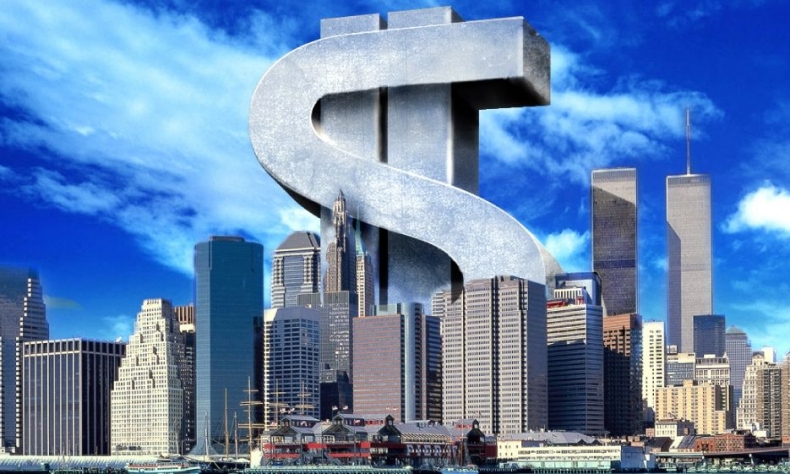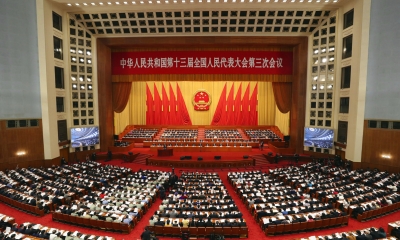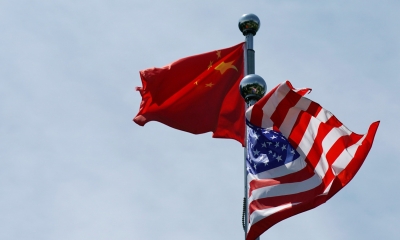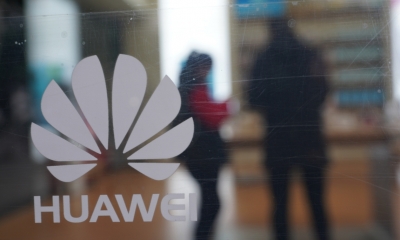The Abrupt FED Rate Cut: for Fighting COVID-19 or for Stock Market?

FED rate cut shows little help to the fast spread of COVID-19 in US and even mislead the stock market. US President Trump’s effort may be a disaster to US future economy.
The sudden US Federal Reserve rate cut of 50 base points on March 3 was exceptional by any standard. It was not decided at its regular board meeting as the next one will be two weeks later. The urgent action was triggered only by Wall Street crash last week and the extreme pressure from President Donald Trump. During the five trading days of last week, DJIA, S&P 500 and NASDAQ fell by 12.4 percent, 11.5 percent and 10.5 percent respectively, never seen since the Lehman failure in September 2008. However, the drastic FED rate cut failed to boost the stocks as they fell sharply again after the FED announcement.
The reason of rate cut given by FED was the evolving risks to economic activities by COVID-19 spread. Immediately after the FED rate cut, the Australian central bank cut its benchmark rate by 0.25 base point to 0.50 percent. Heads of ECB, Bank of England and Bank of Japan have also expressed similar positions for necessary monetary measures. A worldwide rate cuts and monetary easing is well underway.
The FED rate cut undoubtedly contravenes its own obligations and standard which specify two basic thresholds for federal rate changes: full employment and inflation control. Under these conditions, FED supports (not follows) the economic policy of the Administration in general. When there is a high unemployment rate, FED moves to cut rates, When the US CPI exceeds 2 percent (annual rate), FED is general ready for a rate hike. When it exceeds 2.5 percent, FED has to raise the rate. The US unemployment rate remained at 3.6 percent unchanged in January 2020, and does not justify a rate cut. The US core CPI rose by 2.5 percent over the past 12 months up to January 2020, necessitating a rate hike instead of cut. FED statement reaffirmed that “the fundamentals remain strong” in the US economy, thus no rate hike is reasonable.
Little help in fighting COVID-19
The fast spread of COVID-19 across 68 countries of the world has been fast deteriorating the world economic outlook over the past few weeks. OECD estimated in its latest report on March 2 that if the epidemic lasts over Q2 and beyond, the world GDP growth will slow down to 1.5 percent, half of its previous estimate of 2.9 percent made in November, 2019. Similar gloomy scenario is also looming up in the US. Goldman Sachs has put US Q1 GDP growth to as low as 1.2 percent. Janet Yellen, former FED Chairman, has estimated a possible US economic recession in the event of a massive outbreak of the epidemic. Although only 122 cases have been verified as of March 3, much lower than South Korea, Japan, Iran, Italy, and even France and Germany, and President Trump asserts repeatedly the “very low risk”, few people believe in those figures and remarks.
The main reason of the low number has been the extremely slow in testing due to the far insufficient kits supply and expensive costs for the poor. A Harvard expert has estimated that the total verified cases in the US should be around 1,000. The US Department of Defense and City of San Francisco have both announced emergencies. The Department of Health and Human Services officials made it clear that the COVID-19 large scale outbreak in the US is “inevitable”. Senator Lamar Alexandra, Chairman of Senate Committee on healthcare, education and pension has said that there is a “very strong chance of an extremely serious outbreak of the coronavirus here in the United States.”
Nonetheless, Trump Administration has been so far playing down the huge risk, even prohibiting the CDC from announcing the daily information on COVID-19, subjecting it to Vice President Mike Pence to decide the wording. It is, in fact, covering the facts, only for fear of damaging Trump’s re-election chance in November. The political ecology in the presidential election year has cost the transparency and effectiveness in government responses, leaving the American states, counties and communities in a general worry and even panic, and created extensive uncertainties in the market prospect.
The poor government responses will most likely lead to a wider and longer epidemic and a worse economic setback. The prime and foremost task facing the federal government is a thorough transparency, telling the American people and the world all the truth, keeping them updated every hour. On the base of full transparency, effective measures, including quarantine, protective measures and all out medical services should be in full swing. Only when the epidemic is put under effective control, can an economic rebound appear. FED rate cut, helpful somewhat though, is not the key.
FED rate cut for stock market is misleading
Many analysts have all the reasons to suspect that the FED rate cut in a hurry is exactly for the rescue of the stock market crash. President Trump has put the stock prices barometers of his reelection support and its sharp fall as the arch enemy. In other words, the recent FED rate cut is more for a political purpose than a real health or economic consideration. In that case, it will be a misleading move.
The US stock markets, before its crash, was seriously over inflated. Over the past 11 years since the global financial crisis, DJIA rose by an aggregate 359 percent, S&P 500 by 677 percent and NASDAQ by 409 percent, while GDP grew by only 50 percent. The current PE ratio of the stock market is over 30, much higher than that in 2008, the pre-crisis year, which recorded 20 or so. The stock market inflation is a result of excessive liquidities supplies which doubled from US$7.77 trillion in August 2008 to US$15.53 trillion on February 27, 2020. Apple Computer Inc., for example, saw its stock price up 100 percent in 2019 and actual revenue up 2 percent.
During the year of 2019, excessive money flew into the stock market but little moved to the real fixed investment which registered a meager growth of 1.3 percent over the year and even -1.4 percent -0.8 percent and 0.1 percent for Q2, 3 and 4 respectively. DJIA peaked on February 12 at 29568.37. However, the US industrial production index in January was 0.8 percent lower than a year ago. The actual economic fundamentals have been weakening over the past few quarters. The contributions to GDP growth by personal consumption expenditure and gross domestic private investment combined was only 0.12 percent point in Q4, 2019.
Undoubtedly, the only way to escape a possible recession is strong support to the real economy, to real production and consumption activities. The policy moves by Trump Administration and FED seem somewhat different, focusing on propping up the stock market only which will be proved futile. George Soros has said that Trump’s efforts to stock market hikes will lead the US economy to a disastrous mine zone.
Copy Editor: Dong Lingyi
The author is senior fellow at Chongyang Institute for Financial Studies under Renmin University of China and former economic and commercial counselor of Chinese Consulate General in San Francisco and New York City.
 Facebook
Facebook
 Twitter
Twitter
 Linkedin
Linkedin
 Google +
Google +







